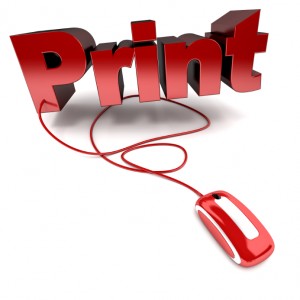In my penultimate blog for 2015, I take a look at how interactive print can take us from the physical into the online world and make the content we read more fun and entertaining. 
In the post, the transformation of print in a multi-channel world, I showcased innovations that are available and essentially transform print into a work of digital art.
I highlighted that print isn’t dead.
Like many, I live in the digital and physical world of online and print consuming content determined by where I am, what I’m doing and how much time I have.
Print has been doggedly fighting new digital technology and innovations, from email marketing to online banking there can be no disputing the fact that print dominance has gradually been eroded by new forms of media.
Why have the paper version when the mobile option makes it truly portable and flexible?
 Despite this, there is a growing reluctance to admit that email and online marketing never reached their full potential, with many of us reaching saturation point with overflowing inboxes and junk e-marketing.
Despite this, there is a growing reluctance to admit that email and online marketing never reached their full potential, with many of us reaching saturation point with overflowing inboxes and junk e-marketing.
Increased awareness of the environmental impact of technology, print is seeing a resurgence particularly in direct mail and there is a real desire for the printed word.
Is print seen as the naughty boy?
I hear comments like oh, print is finished or we’ve cut right back on all our printed items.
Why not look at print differently?
Utilise new technology to deliver the advantages of traditional print but incorporate the latest digital innovations that take print from paper into the digital world.
You can read more about that here.
Only 10 to 15 years ago print was seen as a traditional safe way of delivering communications.
Consumer habits change almost daily.
We use a wide range of devices to access information from apps, to social media to contactless and apple pay purchasing, how humans digest information is fragmented.
Audiences switch between smartphone, tablet to PC to view and purchase this makes it difficult for the marketing manager to create campaigns that engage with their customers.
Technology has helped marketers and brands to understand their audiences and target them with personalised information suitable for them.
We are reliant on mobile technology and there is a generation of young people who have little interaction with print and I think it is very important that we don’t lose print altogether.
The challenge for the print industry is to be able to reinvent itself through new innovations like augmented reality/layar technology and capitalise on these developments by making print truly interactive so the printed word speaks to you.
In the past five years, there have been significant developments in digital technology working with print.
AR (augmented reality) transforms print into interactive content with videos and more digital content.
Layar was one of the early mobile augmented reality browsers to come to market in 2009 providing augmented reality and interactive print bridging the gap between print and the digital world.
Being able to scan items with the Layar logo like magazines, newspapers, movie posters and more, print is brought to life enriched with videos, web content, links to social media, websites and purchasing.
Layar is now part of the Blippar group and according to their website have had more than 46 million downloads by consumers who are keen to digest more content both from print and digital.
Video on demand gives marketing and brands the opportunity to deliver highly personalised advertising and content.
Think BMW or Mercedes Benz highly targeted and personalised  print advertising with AR; the user scans and views how the car performs.
print advertising with AR; the user scans and views how the car performs.
After you’ve visited the showroom, expressed an interest in a particular make and model, marketing then send you a highly interactive personalised piece of direct mail allowing you to scan and view the content.
Imagine how engaging that is for the recipient if combined with a limited discount offer or free servicing.
A badly designed print item will deliver a poor result much the same with interactive print, simply adding interactive content to a poorly designed print item won’t yield good results.
But create a great bit of print and then add an engaging interactive video or content that will deliver great results.
The challenge for the print and marketing industry is not solely the creation of content to drive revenue but encouraging the adoption of interactive content as another touch point for the audience.
Educating marketers to use interactive print and digital that will link all their marketing channels and engage with an otherwise fragmented audience is the challenge to making print interactive and engaging in the long term.


